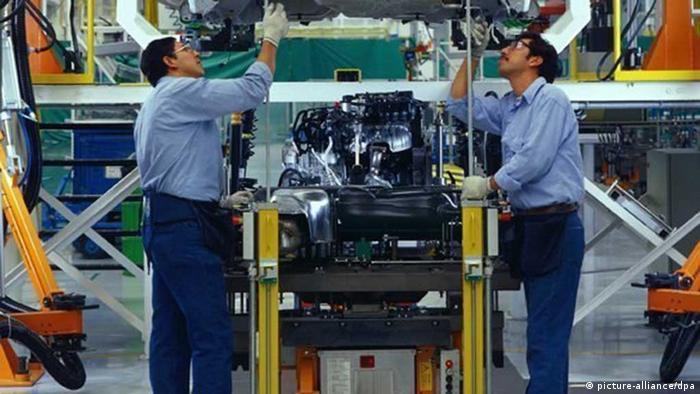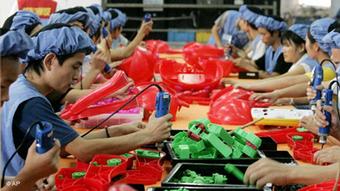Se le acabó la racha a China y le toca a México. Así lo creen, al menos,
algunas empresas de EE.UU.: han dejado atrás los crecientes costes en
China en busca de un país económicamente estable y geográficamente
cercano.
La corporación estadounidense Meco no se lo pensó mucho cuando a
mediados de 2011 quedó claro quer los costes de producción en China se
han duplicado en los últimos 4 años. Meco trasladó toda su producción a
México y ahí fabrica actualmente sus parrillas y mobiliario de jardín.
La misma razón llevó a la empresa neoyorquina Casabella Holdings a
trasladar parte de su cadena de producción de China a México en 2012,
donde ahora sigue produciendo escobas, peladores de patatas y
dosificadores de jabón. Ambas compañías son solo dos de las muchas
empresas estadounidenses que se han decidido por dar el mismo paso:
salir de China y entrar en México.
Por primera vez en 20 años, parece que México puede competir seriamente con China como plaza de producción. Según un cálculo del Fondo Monetario Internacional (FMI) del pasado noviembre, la producción industrial mexicana ha aumentado un 40% entre 2010 y 2012 a expensas de China.
Geografía a favor
Estados Unidos es el principal mercado que está traslandando su producción de China a México: actualmente, más del 14% de las importaciones de este último van a parar a su gran vecino del norte. La ventaja de China ha caído de 29 a 26,4% desde el año 2009. México tiene además 12 tratados de libre comercio con 44 países, cuatro veces más que Brasil, la actual mayor potencia de Latinoamérica, y prácticamente puede comerciar con el continente entero sin pagar aranceles aduaneros.
James Gerber, profesor de economía de la Universidad de San Diego, se muestra realista: “Evidentemente, México no podrá sobrepasar a China de un día para otro como principal productor de Estados Unidos, pero sin duda se ha convertido en un serio contrincante.” La ventaja geográfica de México sobre China también es un factor importante: el transporte, la logística y la comunicación son mucho más fáciles. Asimismo, según Gerber, “la propiedad intelectual se respeta mucho más en México que en China.”
Mejor, por casi el mismo precio
 El Presidente mexicano Peña Nieto se enfrenta a retos decisivos para el crecimiento industrial del país.
También el coste de la mano de obra se va equiparando poco a
poco. El coste de mano de obra en China se ha cuadruplicado en la pasada
década, llegando ahora mismo a los 6 dólares por hora para un
trabajador chino. Un trabajador mexicano resulta menos de medio dólar
más caro. Además cada vez hay más mano de obra cualificada en México:
gracias a iniciativas de la UNESCO, la cifra de arquitectos, ingenieros y
otros especialistas con diploma universitario en el campo de la
producción industrial ha aumentado un 0,8 por mil desde 2009; un tercio
más que en Estados Unidos, cuyas cifras a este respecto no han cambiado
en el mismo margen de tiempo.
El Presidente mexicano Peña Nieto se enfrenta a retos decisivos para el crecimiento industrial del país.
También el coste de la mano de obra se va equiparando poco a
poco. El coste de mano de obra en China se ha cuadruplicado en la pasada
década, llegando ahora mismo a los 6 dólares por hora para un
trabajador chino. Un trabajador mexicano resulta menos de medio dólar
más caro. Además cada vez hay más mano de obra cualificada en México:
gracias a iniciativas de la UNESCO, la cifra de arquitectos, ingenieros y
otros especialistas con diploma universitario en el campo de la
producción industrial ha aumentado un 0,8 por mil desde 2009; un tercio
más que en Estados Unidos, cuyas cifras a este respecto no han cambiado
en el mismo margen de tiempo.
¿Por qué, entonces, sigue estando México por debajo de China como líder de producción para EE.UU.? Principalmente, por la criminalidad y la guerra contra el narcotráfico que tiene lugar cada día en el país latinoamericano.
Por otro lado, hasta el momento no existe evidencia alguna de que una corporación internacional haya sido disuadida violentamente para invertir en México. Y en el futuro del gobierno del presidente mexicano Enrique Peña Nieto se encuentran prometedores retos: reducir los elevados costes de energía y comunicación, y una modernización de las vías de transporte. Elementos que podrían aumentar significativamente la ventaja mexicana sobre China.
Autor: Rafael Roldão / lab
Editor: Pablo Kummetz
Por primera vez en 20 años, parece que México puede competir seriamente con China como plaza de producción. Según un cálculo del Fondo Monetario Internacional (FMI) del pasado noviembre, la producción industrial mexicana ha aumentado un 40% entre 2010 y 2012 a expensas de China.
Geografía a favor
Estados Unidos es el principal mercado que está traslandando su producción de China a México: actualmente, más del 14% de las importaciones de este último van a parar a su gran vecino del norte. La ventaja de China ha caído de 29 a 26,4% desde el año 2009. México tiene además 12 tratados de libre comercio con 44 países, cuatro veces más que Brasil, la actual mayor potencia de Latinoamérica, y prácticamente puede comerciar con el continente entero sin pagar aranceles aduaneros.
James Gerber, profesor de economía de la Universidad de San Diego, se muestra realista: “Evidentemente, México no podrá sobrepasar a China de un día para otro como principal productor de Estados Unidos, pero sin duda se ha convertido en un serio contrincante.” La ventaja geográfica de México sobre China también es un factor importante: el transporte, la logística y la comunicación son mucho más fáciles. Asimismo, según Gerber, “la propiedad intelectual se respeta mucho más en México que en China.”
Mejor, por casi el mismo precio
 El Presidente mexicano Peña Nieto se enfrenta a retos decisivos para el crecimiento industrial del país.
El Presidente mexicano Peña Nieto se enfrenta a retos decisivos para el crecimiento industrial del país.
¿Por qué, entonces, sigue estando México por debajo de China como líder de producción para EE.UU.? Principalmente, por la criminalidad y la guerra contra el narcotráfico que tiene lugar cada día en el país latinoamericano.
Por otro lado, hasta el momento no existe evidencia alguna de que una corporación internacional haya sido disuadida violentamente para invertir en México. Y en el futuro del gobierno del presidente mexicano Enrique Peña Nieto se encuentran prometedores retos: reducir los elevados costes de energía y comunicación, y una modernización de las vías de transporte. Elementos que podrían aumentar significativamente la ventaja mexicana sobre China.
Autor: Rafael Roldão / lab
Editor: Pablo Kummetz




 Muy loable un nuevo intento de concienciar a la opinión pública de las bondades de la educación, como modo de acceder al mercado laboral. El único pero que le pondría no es lo que dice sino lo que calla.
Muy loable un nuevo intento de concienciar a la opinión pública de las bondades de la educación, como modo de acceder al mercado laboral. El único pero que le pondría no es lo que dice sino lo que calla.



Barry Eichengreen
Our Children’s Economics